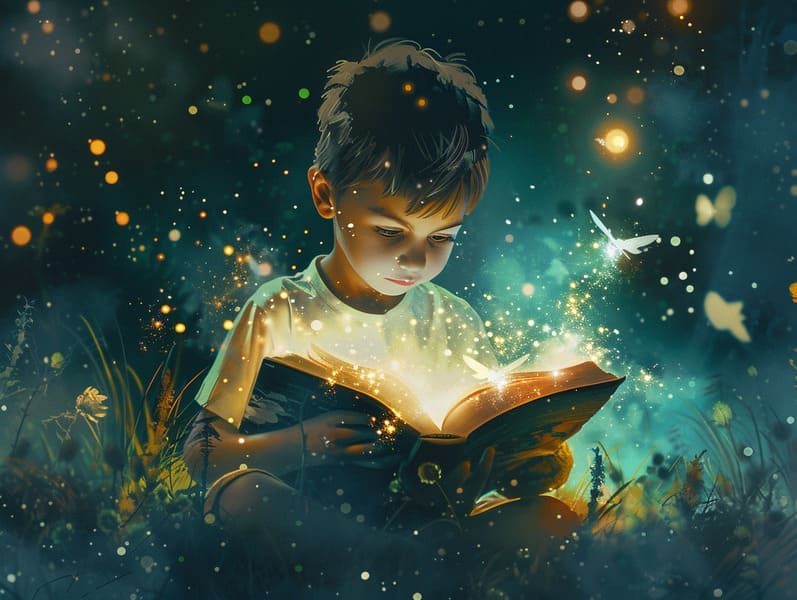Uncovering the Past of Famous Fairy Tales and Its Invariable Spell.
Uncovering the Past of Famous Fairy Tales and Its Invariable Spell.
Blog Article

Traditional fairy tales have legendary status. These narratives have been told from one generation to the next well before they were ever put on paper. They sprang from a variety of traditions, including Asian traditions. They were initially narrated among adults, often carrying themes and messages aligned with the societal norms and beliefs of the time.
The Grimm brothers, Jacob and Wilhelm, were among the first to collect and release many of these beloved tales. Their published works, "Grimm's Children's Stories," included classics like "Ashenputtel," "Hansel and Gretel," and "The True Story of Snow White," which have since become staples in the world of timeless fairy tales. Similarly, Hans Andersen's magical tales, such as "The Story of the Little Mermaid," and "The Story of the Ugly Duckling," have touched hearts worldwide, guaranteeing their place in the pantheon of treasured fairy tales.
Despite their ancient origins, fairy tales remain as impactful as ever, especially as kids' bedtime tales. These fantastical tales are now available in many formats, including vibrantly illustrated books, enchanting animations, and online fairy tales.
Their lasting appeal can be ascribed to several captivating elements:
Life Lessons: Old fairy tales often impart important moral lessons. Fairy tales like "The Story of the Boy Who Cried Wolf" teach the importance of honesty, while "The Tale of the Tortoise and the Hare" highlight the traits of determination and unpretentiousness. These narratives offer young ones clear distinctions between moral and immoral, helping to shape their moral compass in a soft yet impactful way.
Empathy and Understanding: Old fairy tales frequently illustrate heroes facing struggles and tests, motivating children to understand with their struggles and cheer for their triumphs. For instance, "Beauty and Her Beast" emphasizes the significance of looking beyond appearances to comprehend the true character of a soul, building tenderness and understanding.
Cultural Appreciation: Many fairy tales are imbued with the cultural contexts from which they came. Immersing in these stories can provide intriguing perspectives into different social structures, enhancing a sense of world respect and discernment.
Imagination and Innovation: The fanciful elements in old fairy tales—supernatural elements—promote children’s visions and dreams. These narratives guide readers to fantasy realms, boosting imaginative ideas and a sense of curiosity that endures a lifetime.
Classic fairy tales are not only captivating but also teaching. They serve as bewitching tools in developing various cognitive and emotional skills in kids. When ancient fairy tales are spoken out loud, they advance speaking abilities by offering new terms and complex sentence structures. This practice also promotes listening skills and concentration, as young readers remain attentive, looking forward to see what happens next.
Furthermore, conversing about the themes and characters of fairy tales can strengthen logical thinking and thinking skills. The young learn to detect patterns, guess what will happen, and grasp cause and effect. These contemplations also encourage children voice their thoughts and feelings, fostering their emotional intelligence.
In today’s digital age, the existence of digital storybooks has made these fairy tales more available than ever. Websites and digital apps share broad selections of ancient fairy tales that can be seen or heard anytime, anywhere. Fairy tales read aloud are particularly popular, providing an charming way for the young to take part in these whimsical stories. Read-aloud stories and voiced videos move characters and settings to life, often joined by whimsical music and harmonies that improve the storytelling experience.
The timeless fascination of traditional fairy tales lies in their ability to shift to today's world while keeping their core messages. Contemporary renditions of these narratives often showcase more multicultural figures and click here modern settings, making them relevant to today’s audience. However, the main ideas of fortitude, empathy, and justness remain unchanged, continuing to influence young readers of all ages.
Old fairy tales also offer a sense of solace and recognition. They present to a tidy narrative with a evident beginning, middle, and end, often finishing with the finalization of conflicts and the triumph of good over bad. This consistency can be reassuring for children, bringing a sense of unwaveringness in an variable world.
Old fairy tales continue to charm and edify new generations, maintaining their radiance and impact in modern society. As nighttime stories for kids, they extend a perfect blend of allure and teaching, nourishing moral values, empathy, and creativity. The existence of digital fairy tales and the commonness of fairy tales voiced ratify that these classic tales remain within reach to new generations.
By retaining and imparting these stories, we continue to value the rich tapestry of cultural legacy and cultural heritage. Whether you are exploring a vibrantly illustrated book, perusing a electronic library, or playing an read-aloud book, the delight of classic fairy tales is always within reach. These tales highlight of the everlasting spell of tales and its ability to hold us together across generations and cultures.
Regardless if you are discovering a vividly illustrated book, delving into a cyber collection, or listening to an spoken story, the spell of classic fairy tales is always within reach.
These stories show us of the invariable nature of fairy tales and its ability to connect us across generations and cultures, making a tie that fascinates and enlightens alike.